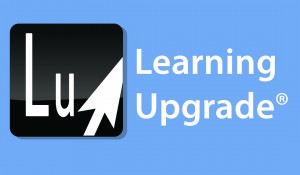Take a look at a typical third grade classroom. While the teacher is talking, how many students are actually paying attention? Beyond that, how many are actually learning?
Those students with drifting eyes or fidgety hands aren’t bad students; they just aren’t engaged. The traditional “Charlie Brown Teacher” method doesn’t connect with them.
As the Title I teacher for at-risk students in my district, I’ve seen firsthand how once low-achieving students can come alive with a teaching style and instructional tools that click with them. The ed tech industry has done a great job thus far in helping teachers move beyond that “Sage on Stage” to more interaction with students.
But there’s so much more support we need from ed tech companies to support teachers in truly engaging students and having them increase their learning and their confidence.
Here are just a few:
1.) Assessment drives instruction.
The ability to identify every student’s strengths and weaknesses is incredibly helpful to me as a teacher. Of course, I use summative tools, such as the DIBELS and the STAR reading and math assessments, to determine a student’s progress at certain checkpoints throughout the year.
However, I absolutely love when products include a formative assessment component right in their platform. This makes it much easier to see what my students are struggling with on a daily basis. It also allows me to even further personalize their instruction.
2.) Don’t stick to just one type of content.
Anyone who’s spent more than half an hour around elementary school students knows they have very short attention spans, particularly in today’s hyper-connected world. It’s more important now than ever to keep content short, on point, engaging, meaningful, and moving on pace with students. That’s a tall order, clearly, but it’s not impossible.
Learning Upgrade, an online reading and math platform linked to standards, provides a variety of content that helps me engage every student, regardless of his or her learning style. With this tool, I can incorporate songs, use animated videos, or interactive games to teach concepts from polynomials and analogies to parts of a sentence. All of a sudden, students are singing along with one of the songs or videos; they’re engaged and having fun while they’re learning. It’s a learning process that comes naturally to them, being the digital natives that they area. I have seen a true and complete transformation of how my students view school—it’s fun, not work.
3.) Offer some freebies.
It’s no secret that school budgets are tight and teachers’ personal budgets are even tighter. So, a free trial or some free practice content can ease a teacher’s anxiety because we can “try it before we buy it.”
For example, when I was looking for an e-reading platform, I loved checking out the free book samples from Raz-Kids. Not only do they give students full access to the text of the book, they give a taste of their read-along and audio versions plus a sample worksheet and quiz! Once I saw how well my students responded to the free samples, I was able to justify purchasing the product.
Offering free content also helps teachers personalize students’ learning experiences, because we can see ahead of time how many licenses we’ll need. Taking some of that guesswork out of the purchasing process helps us do our jobs more effectively, and it helps our students get the most out of their time in class.
4.) Just get started.
This has been my motto for years, and it’s just as applicable to ed tech companies as it is to my fellow teachers.
If you’ve identified a weakness in your product, don’t wait for the perfect moment to make a change. Get started today and don’t worry if you hit some bumps along the way. You could even offer Beta versions to some of your most loyal customers to get their feedback. I know I would personally love the opportunity to weigh in on how to improve my favorite ed tech products, and I’m sure I’m not alone.
We teachers are hungry for products to make our teaching better, our jobs easier, and our students happier. It’s happening in my classroom. Consider this: While walking down a hall of our school recently, a straight-A student approached me and asked, “What do I have to do to get into your classroom?”
I’m the Title 1 teacher for at-risk students, but she, like other non-Title I students in the school, thought of my class as a fun, exciting place—and it is!
I’m sure a large part of that reputation is due to the amazing ed tech products I use in my classroom – my students are always bragging to their classmates about the fun eBooks they’re reading or humming the educational songs they learned. To me, that says you all are doing something right, so keep up the good work!
_____________________________________________________________________________________________________________________________________________
Written by Paula Rogers, Title I reading and math specialist for Langdon Area Schools in Langdon, North Dakota. She also trains new and prospective teachers through courses at the University of North Dakota. She has been a teacher for 37 years, and she holds a Master’s degree in technology education from Lesley University. She may be reached at paula.rogers@sendit.nodak.edu.


